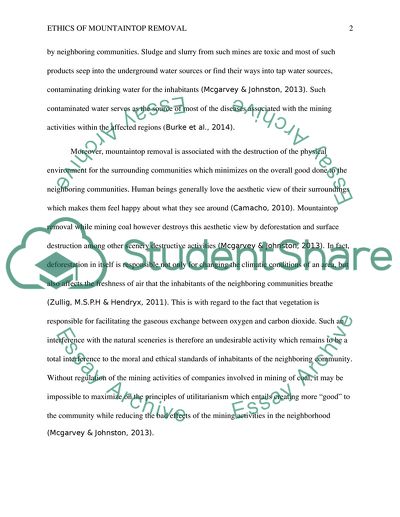Cite this document
(“The Ethics of Mountaintop Removal Essay Example | Topics and Well Written Essays - 1000 words”, n.d.)
Retrieved from https://studentshare.org/environmental-studies/1701561-the-ethics-of-mountaintop-removal
Retrieved from https://studentshare.org/environmental-studies/1701561-the-ethics-of-mountaintop-removal
(The Ethics of Mountaintop Removal Essay Example | Topics and Well Written Essays - 1000 Words)
https://studentshare.org/environmental-studies/1701561-the-ethics-of-mountaintop-removal.
https://studentshare.org/environmental-studies/1701561-the-ethics-of-mountaintop-removal.
“The Ethics of Mountaintop Removal Essay Example | Topics and Well Written Essays - 1000 Words”, n.d. https://studentshare.org/environmental-studies/1701561-the-ethics-of-mountaintop-removal.


